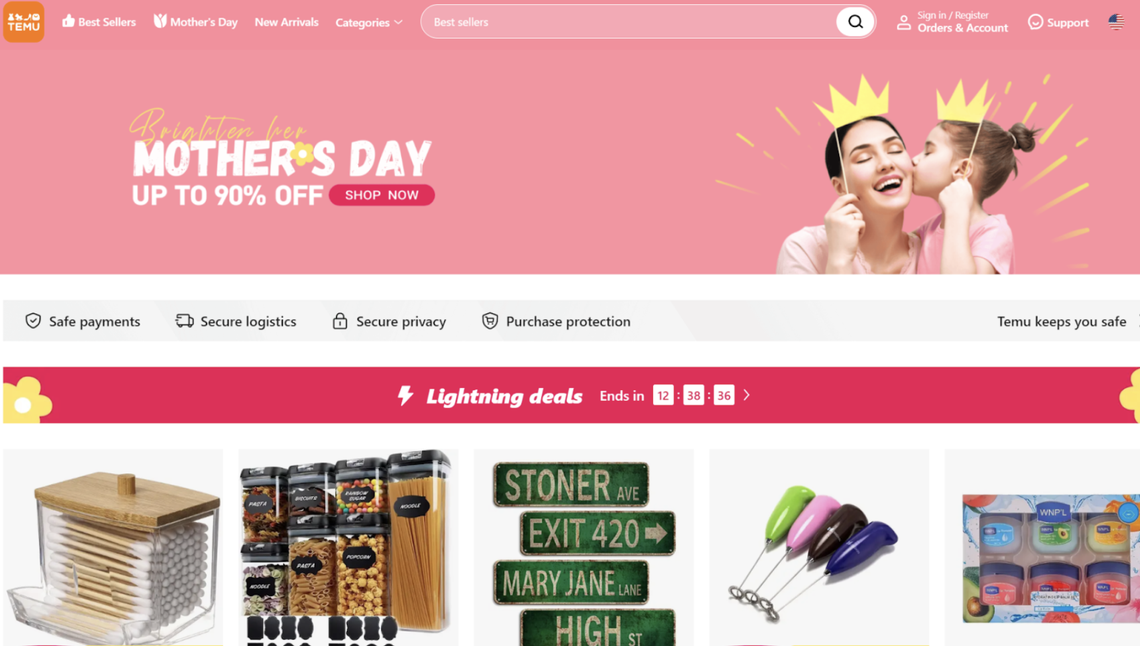How Temu Offers Unbelievably Low Prices Through Next Gen Manufacturing

Temu is a new online shopping site that entered into our radar just a few months ago, but its price has been shockingly low. Is it too good to be true? We have done a bit more digging to see where it got its products from and how it can make the price so low. Then we discovered its Next Gen Manufacturing process that has fueled its growth in the US, Canada, Australia and New Zealand.
For years, consumers have eagerly awaited the year-end holiday shopping season, hoping to snag discounted products as manufacturers and retailers clear out slow-moving or unwanted merchandise. However, this practice is rooted in the outdated concept that consumers should bear the cost of retailers’ and manufacturers’ miscalculations in matching supply and demand.
What is Temu?
Temu is a Boston-based online platform known for offering a vast selection of quality merchandise at near-wholesale prices. It is set to revolutionize the retail industry, shifting the focus to designing products with the buyer in mind and offering cost savings of more than 50% through its Next-Gen Manufacturing (NGM) model.
The platform provides an extensive range of products across various categories, ensuring customers can find items to suit their needs. Since its launch in September 2022, Temu has experienced rapid growth and expansion, quickly gaining traction in multiple markets, including Canada, Australia, and New Zealand. In just six months, the platform has garnered significant attention from both consumers and media, thanks to its unique approach to retail that combines quality products with competitive pricing.
What does Temu mean?
The word “Temu” is derived from the company motto “Team Up, Price Down,” which expresses the company’s goal to reduce costs for its users by leveraging economies of scale. The name is pronounced “tee-moo” with an emphasis on the first syllable.
How is Temu different from Shein, AliExpress, Wish?
Temu is different from e-commerce platforms like AliExpress, Wish, and Shein by adopting the Next-Gen Manufacturing model, which allows Temu to provide substantially lower prices while guaranteeing an improved product fit and sustaining quality.
A notable distinction between Temu and its rivals is its firm stance against dropshipping. Dropshipping, a practice commonly associated with subpar customer service, excessive pricing, lengthy shipping durations, and complicated after-sales return and refund processes, is forbidden on the Temu platform. By prohibiting dropshipping, Temu ensures an enhanced customer experience for its users.
How does Next-Gen Manufacturing work?
The foundation of Next-Gen Manufacturing (NGM) lies in its ability to harness real-time insights, which enables manufacturers to be nimble and responsive to shifts in consumer preferences. This approach presents a significant departure from traditional retail strategies, which often rely on discounted sales to clear excess inventory or products that failed to resonate with consumers. NGM offers a forward-looking vision for the future of retail, where products are created to meet consumer needs, and manufacturers can adapt rapidly to changing market trends.
NGM achieves its impressive cost savings over conventional processes through five key areas:
Better understanding of consumers leads to better product fit: By sharing valuable insights on consumer preferences and shopping behaviors with manufacturers and merchants, Temu enables the creation of tailored products at the best prices, resulting in more efficient use of resources and improved customer satisfaction.
More accurate sales predictions reduce wasteful production: Temu’s real-time insights enable manufacturers to predict sales volume with greater accuracy, leading to less waste in raw materials and manufacturing processes. This improved forecasting results in a faster time-to-market for consumer-oriented products, which ultimately benefits both businesses and consumers.
More efficient inventory management: NGM’s enhanced sales forecasting reduces inventory risk for merchants and brands, minimizing overproduction and warehousing costs. This streamlined approach frees up capital and resources, allowing businesses to focus on other aspects of growth and development.
Less marketing, more savings: As supply more accurately meets demand through NGM, marketing budgets can be reduced, as customers are already seeking out the products they need. This shift in focus allows businesses to invest in other areas or pass on the savings to consumers in the form of lower prices.
More nimble logistics, faster delivery: NGM’s better prediction of sales quantity enables products to be shipped directly from factory lines to sorting facilities, reducing the need for large warehouses and streamlining the delivery process. This efficiency extends to partnering with third-party and last-mile logistics providers to ensure seamless delivery to consumers.
NGM presents a transformative approach to retail that challenges the status quo. Gone are the days of waiting for holiday sales to unload slow-moving merchandise at the expense of consumers. By leveraging real-time insights and focusing on meeting consumer needs, manufacturers can adapt quickly to ever-changing market trends, creating a more efficient, sustainable, and customer-centric retail landscape.
Does Temu sell counterfeit products?
No, Temu does not sell counterfeit products or knock-offs. The company maintains a strict vetting process for all third-party sellers, ensuring that they adhere to quality standards. Sellers who violate Temu’s policies, which include selling counterfeit items, can be permanently banned from the platform. Temu is dedicated to ethical, humane, and lawful business practices and requires merchants to comply with its code of conduct and all applicable laws.
Conclusion
Temu’s innovative model envisions a future where products are designed and manufactured with the buyer’s needs and preferences at the forefront. This approach not only reduces waste but also translates into significant cost savings for the end consumer.
As the retail industry continues to evolve, the future of shopping may look very different from what we know today. With the rise of NGM, consumers can expect a more personalized, efficient, and cost-effective shopping experience, making the age-old practice of waiting for holiday sales a relic of the past.
McClatchy newsroom and editorial staff were not involved in the creation of this content.

